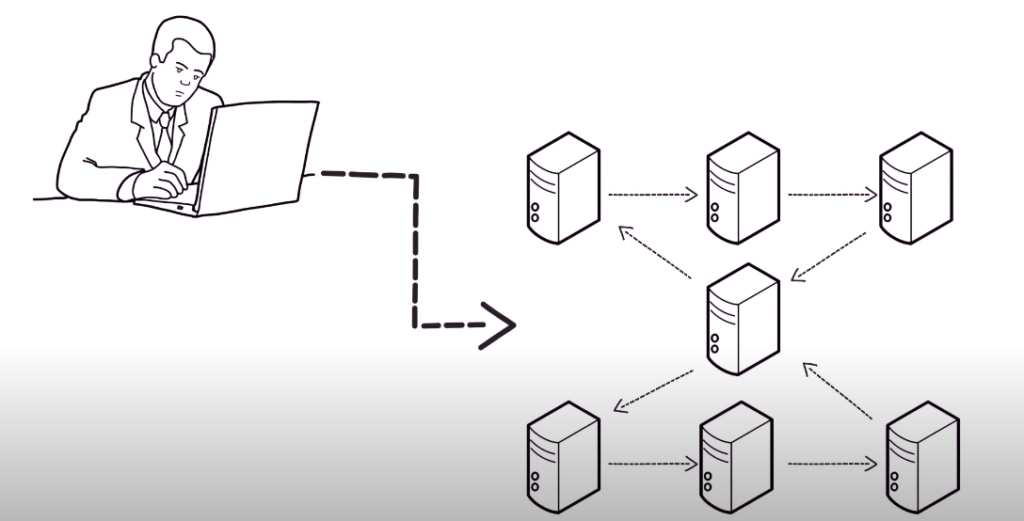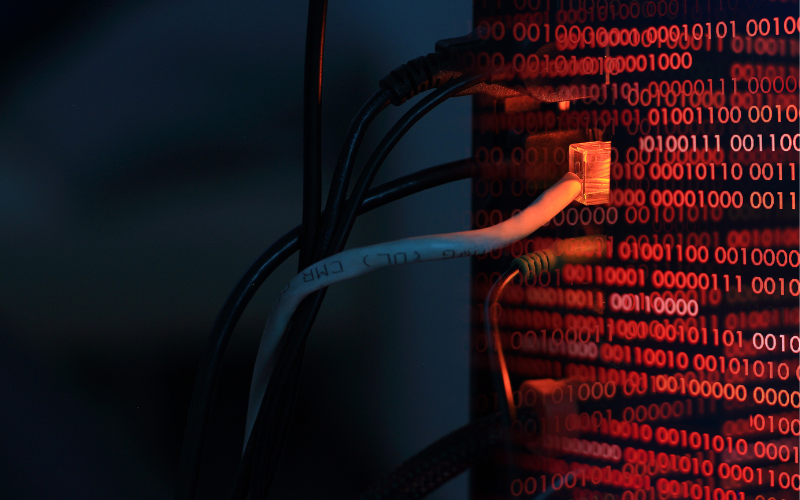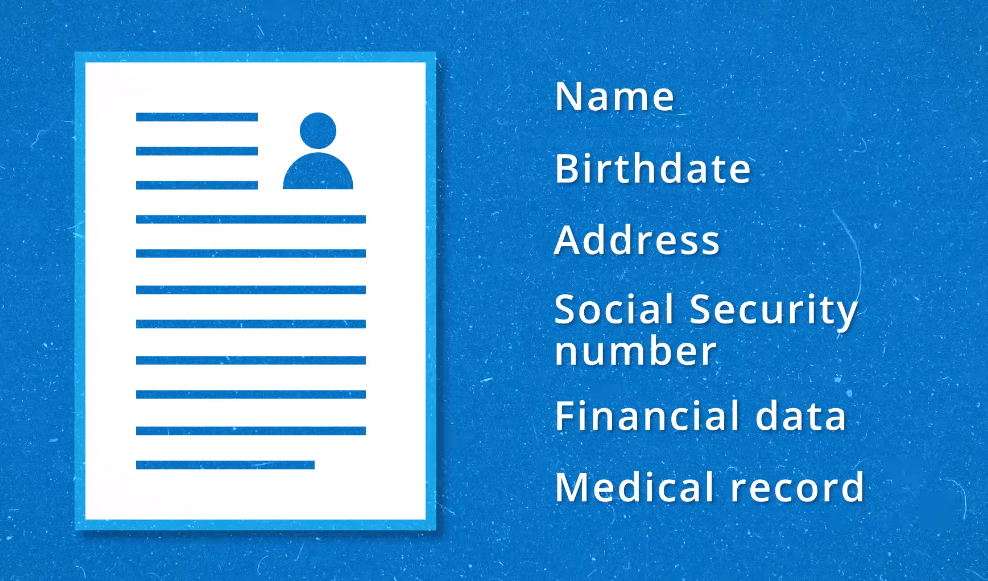Protecting Privacy Data In IT Infrastructure: A Comprehensive Guide
Introduction
In today’s digital age, data privacy is of utmost importance. With the increasing amount of sensitive information being stored and processed in IT infrastructure, it is essential to ensure that proper measures are taken to protect this data from unauthorized access or disclosure. This comprehensive guide aims to provide a detailed overview of the steps that organizations can take to safeguard their private data in their IT infrastructure. From implementing strong access controls to encrypting data, this guide covers all the essential aspects of data privacy protection.
Overview Of Typical IT Infrastructure

An IT infrastructure typically includes hardware components such as servers, storage devices, and networking equipment, as well as software components such as operating systems, databases, and applications. This infrastructure enables organizations to store and process data, communicate with other systems, and deliver services to their customers. However, this infrastructure also poses significant security risks, as it may be targeted by malicious actors seeking to steal or compromise sensitive data. Therefore, it is crucial to implement robust security measures to protect the confidentiality, integrity, and availability of data in the IT infrastructure.
Privacy Data In IT Infrastructure
Protecting privacy data in IT infrastructure is essential to maintain the confidentiality and integrity of sensitive information. The first step in protecting privacy data is to classify it based on its sensitivity level. This will help in determining the appropriate security controls to be implemented. Access control is a crucial security measure to protect private data. Access to sensitive data should be restricted to authorized personnel only, and access logs should be maintained to monitor who accessed the data and when.
Encryption is another essential security measure to protect private data. Data should be encrypted both in transit and at rest to prevent unauthorized access. Additionally, strong password policies and multi-factor authentication should be implemented to ensure that only authorized users can access the data.
Regular security audits and vulnerability assessments should also be conducted to identify and address any security gaps in the IT infrastructure. This will help in maintaining the confidentiality, integrity, and availability of private data in the IT infrastructure.
Which Of The Seven Domains Of A Typical IT Infrastructure Usually Contains Privacy Data
The data domain of a typical IT infrastructure usually contains private data. This includes databases, file servers, and other data storage systems where sensitive information such as personal identification numbers, medical records, financial data, and other confidential information is stored. It is important to implement strong security measures in this domain to ensure the protection of private data.
Typical IT Infrastructure Usually Contains Privacy Data In Systems, Servers, And Databases.
The data domain of an IT infrastructure often houses sensitive information, such as personal identification numbers, medical records, and financial data. This information is typically stored in databases, file servers, and other data storage systems. To safeguard this private data, it is crucial to implement robust security measures in this domain.
Risks Of Storing Privacy Data In IT Infrastructure
Storing private data in an IT infrastructure can pose various risks, including data breaches, unauthorized access, insider threats, cyberattacks, regulatory compliance violations, and theft. These risks can result in financial losses, legal liabilities, and reputational damage to the organization. Moreover, privacy data is subject to various regulations and compliance requirements, such as GDPR and HIPAA, which impose strict guidelines on how organizations must handle and protect this data. Therefore, it is essential to implement appropriate security controls and regularly monitor and audit the data domain to ensure compliance and mitigate the risks associated with storing private data in IT infrastructure.
Data Breaches

Data breaches are a serious threat to any organization that handles sensitive information. A data breach occurs when an unauthorized individual gains access to private data, such as personal information, financial data, or intellectual property. The consequences of a data breach can be severe, including financial losses, legal liabilities, and reputational damage. To prevent data breaches, organizations must implement robust security measures, such as strong passwords, encryption, and access controls. Regular vulnerability assessments and penetration testing can also help identify potential weaknesses in the IT infrastructure and address them before they can be exploited by hackers.
In the event of a data breach, organizations must have a response plan in place to minimize the damage and prevent future breaches. This plan should include steps such as notifying affected individuals, investigating the breach, and implementing measures to prevent similar incidents from occurring in the future.
Insider Threats
Insider threats refer to the risk of data breaches caused by an organization’s employees, contractors, or partners who have authorized access to the company’s systems and data. These threats can be intentional or unintentional and can result in the exposure of sensitive data, intellectual property theft, or other security incidents. To mitigate the risk of insider threats, organizations should implement security policies and procedures that limit access to sensitive data to only those who need it for their job functions. They should also monitor employee behavior and activity on the network to detect any suspicious activity, such as unauthorized access or data exfiltration.
Regular employee training and awareness programs can also help to prevent insider threats by educating employees on the importance of data security and the potential consequences of data breaches. Additionally, organizations should have a clear incident response plan in place to quickly respond to and contain any security incidents caused by insider threats.
Cyberattacks

Cyberattacks are a growing threat to organizations of all sizes and industries. These attacks can come in many forms, including phishing emails, malware infections, ransomware attacks, and more.
To protect against cyberattacks, organizations should implement a multi-layered approach to security. This may include firewalls, antivirus software, intrusion detection and prevention systems, and regular software updates and patches.
Additionally, employee training and awareness programs can help to prevent cyberattacks by educating employees on how to identify and avoid common threats like phishing emails and social engineering attacks.
Regulatory Compliance Violations
Organizations can prevent regulatory compliance violations by regularly reviewing and updating their policies and procedures to ensure they are in line with industry regulations and standards. It is also important to train employees on these policies and procedures and to monitor compliance through regular audits and assessments.
Data Theft
Data theft is a serious concern for organizations, and it can result in significant financial and reputational damage. To prevent data theft, organizations should implement strong security measures, such as encryption, firewalls, and access controls. It is also important to train employees on the importance of data security and to conduct regular security audits and assessments to identify vulnerabilities and address them promptly.
Best Practices For Protecting Privacy Data In IT Infrastructure
There are several best practices that organizations can implement to protect privacy data in their IT infrastructure. These include:
1. Implementing strong access controls: Limiting access to sensitive data to only those employees who need it and ensuring that access is granted based on a need-to-know basis.
2. Regularly monitoring and auditing access: Regularly monitoring access to sensitive data and auditing access logs to identify any suspicious activity.
3. Encrypting sensitive data: Encrypting sensitive data both in transit and at rest to protect it from unauthorized access.
4. Implementing multi-factor authentication: Requiring users to provide multiple forms of authentication, such as a password and a security token, to access sensitive data.
5. Conduct regular security assessments: Conduct regular security assessments to identify vulnerabilities and address them before they can be exploited.
6. Providing security awareness training: Providing regular security awareness training to employees to help them identify and prevent potential security threats.
By implementing these best practices, organizations can better protect their private data and reduce the risk of a data breach.
Compliance Requirements For Privacy Data In IT Infrastructure
Compliance requirements for privacy data in IT infrastructure vary depending on the industry and country. However, some common regulations and guidelines include:
1. General Data Protection Regulation (GDPR): This regulation applies to all organizations that handle the personal data of EU citizens and requires them to implement appropriate security measures to protect the data.
2. Health Insurance Portability and Accountability Act (HIPAA): This regulation applies to healthcare organizations and requires them to implement security measures to protect patient data.
3. Payment Card Industry Data Security Standard (PCI DSS): This standard applies to organizations that handle payment card data and requires them to implement security measures to protect the data.
4. Sarbanes-Oxley Act (SOX): This act applies to publicly traded companies and requires them to implement security measures to protect financial data.
To comply with these regulations and guidelines, organizations must implement appropriate security measures such as encryption, access controls, and monitoring. They must also conduct regular security assessments and provide security awareness training to employees.
Privacy Data Protection In Cloud-Based Infrastructure
Cloud computing has become a popular choice for organizations to store and process data due to its scalability, flexibility, and cost-effectiveness. However, it also presents unique risks and challenges for privacy data protection, especially in the context of compliance with regulations like the Sarbanes-Oxley Act.
One major concern is the lack of physical control over the infrastructure and data. When data is stored and processed in the cloud, it is often distributed across multiple servers and locations, making it difficult to track and secure. This increases the risk of unauthorized access, data breaches, and data loss.
Another challenge is the need to ensure that the cloud service provider (CSP) is compliant with relevant regulations and guidelines. Organizations must carefully evaluate the security and privacy measures of the CSP, including their data encryption, access controls, and incident response capabilities. They must also ensure that the CSP provides transparency and accountability in terms of data handling and processing.
To address these risks and challenges, organizations can implement a variety of security measures, such as data encryption, multi-factor authentication, and network segmentation. They can also leverage third-party security and compliance tools to monitor and audit the cloud environment. Additionally, they should establish clear policies and procedures for data handling and incident response and regularly train employees on security best practices. Furthermore, organizations should conduct thorough due diligence when selecting a CSP, including evaluating their security certifications and compliance with industry standards. They should also carefully review the CSP’s service level agreements (SLAs) to ensure that they meet the organization’s security and compliance requirements.
Shared Responsibility Model
The Shared Responsibility Model is a framework that outlines the responsibilities of both cloud service providers (CSPs) and their customers in ensuring the security of cloud-based systems and data. CSPs are responsible for securing the underlying infrastructure, including the physical data centers, networks, and servers, as well as providing basic security features such as firewalls and intrusion detection systems. Customers, on the other hand, are responsible for securing their data and applications within the cloud environment, as well as managing access controls and user permissions. This includes implementing strong authentication mechanisms, encrypting sensitive data, and monitoring for suspicious activity.
Cloud Service Provider Security Measures
Cloud Service Providers (CSPs) also play a critical role in ensuring the security of cloud-based systems and data. They are responsible for implementing and maintaining security measures at the infrastructure level, such as physical security, network security, and data center security. CSPs also provide security features and tools that customers can use to secure their applications and data within the cloud environment. This includes features such as firewalls, intrusion detection and prevention systems, and data encryption.
In addition, CSPs often undergo third-party audits and certifications to demonstrate their compliance with industry standards and regulations, such as ISO 27001 and SOC 2.
Cloud Security Best Practices
Cloud security best practices include:
1. Conduct a thorough risk assessment to identify potential security risks and vulnerabilities.
2. Implementing strong access controls and authentication mechanisms to prevent unauthorized access to cloud resources.
3. Regularly monitor and analyze cloud activity to detect and respond to security incidents promptly.
4. Encrypting sensitive data both in transit and at rest to protect it from unauthorized access.
5. Implementing data backup and disaster recovery plans to ensure business continuity in the event of security.
Conclusion
In conclusion, securing cloud resources is crucial for any organization that wants to protect its sensitive data and prevent security incidents. By following best practices such as conducting regular risk assessments, implementing strong access controls, monitoring cloud activity, encrypting data, and having a disaster recovery plan in place, organizations can minimize the risk of security breaches and ensure business continuity. As a writing assistant, I am here to help you craft clear and concise messages to communicate these important security measures to your team and stakeholders.
Frequently Asked Questions (FAQs)
What Is Privacy Data?

Privacy data refers to any information that can be used to identify an individual, such as their name, address, phone number, email address, social security number, or other personal information. This data is often sensitive and should be protected to prevent unauthorized access or use. Organizations have a responsibility to safeguard private data and comply with relevant laws and regulations, such as GDPR or CCPA.
What Are The Best Practices For Protecting Privacy Data In IT Infrastructure?
Several best practices can help protect privacy data in IT infrastructure:
1. Encryption: Use encryption to protect private data both at rest and in transit. This ensures that even if the data is accessed by unauthorized individuals, it cannot be read or used.
2. Access controls: Implement access controls to ensure that only authorized individuals have access to private data. This includes strong password policies, multi-factor authentication, and role-based access controls.
3. Regular backups: Ensure that privacy data is regularly backed up and stored securely in case of hardware failure or data loss.
4. Regular updates and patches: Keep IT infrastructure up to date with the latest security updates and patches to prevent vulnerabilities from being exploited.
5. Employee training: Train employees on the importance of protecting private data and how to identify and report potential security threats.
6. Regular security audits: Conduct regular security audits to identify and address any potential vulnerabilities in the IT infrastructure.
What Are The Compliance Requirements For Privacy Data In IT Infrastructure?
Compliance requirements for privacy data in IT infrastructure can vary depending on the industry and location of the organization. However, some common compliance requirements include:
1. General Data Protection Regulation (GDPR): This applies to all organizations that process the personal data of EU citizens, regardless of where the organization is located.
2. Health Insurance Portability and Accountability Act (HIPAA): This applies to organizations that handle protected health information (PHI) in the United States.
3. Payment Card Industry Data Security Standard (PCI DSS): This applies to organizations that handle credit card information.
4. Sarbanes-Oxley Act (SOX): Applies to publicly traded companies in the United States and requires the protection of financial information.
5. California Consumer Privacy Act (CCPA): Applies to organizations that collect the personal information of California residents.
